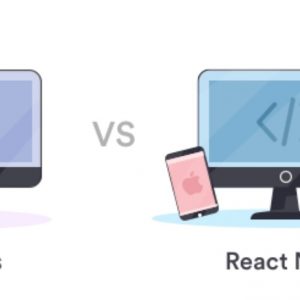Product management processes are a hot topic in today’s software development world. It seems that every company has its specific process, but it’s often unclear why they work the way they do. Although there are many similarities between Kanban and Scrum, they are also very different. This article will highlight some of the major differences between the two on a conceptual level so you can decide which is right for you to manage end-to-end custom software and application development.
What is Kanban?
Kanban is a Japanese word that means “visual sign”. It is a way to manage workflow by setting priorities and visualizing the status of tasks. The Kanban methodology was created to improve manufacturing efficiency in Toyota, but it can be applied to software development as well.
Kanban boards are divided into three categories: To Do, Doing, and Done. The tasks in each column are color-coded to represent their status and priority level. There are usually no limits on the number of tasks the team can work on concurrently, so the team can focus on their strengths and interests.
What is Scrum?
Scrum is a project management method that works in a highly iterative and incremental way. This means that it allows teams to start a project with no detailed planning, which gives them room to adapt to changes as they work.
Scrum teams break down their work into short iterations called Sprints (usually two weeks long). At the end of each Sprint, they deliver potentially shippable software. This allows them to get feedback early and often on what they are building.
The Scrum team holds daily meetings called Daily Scrums to update each other on progress, identify and solve problems, and plan for the next day’s work. The Daily Scrum is meant to keep the team focused on completing their Sprint goal.
Scrum is extremely popular because it is an agile framework that helps teams manage uncertainty and change. Teams can use it to plan out how much work they can commit to in an iteration, how quickly they can deliver new features, or how fast they can resolve bugs and issues.
Similarities between Scrum and Kanban
- Both Kanban and Scrum provide frameworks for developers to work in short iterations. Both can be used to build almost any kind of product. Both require a level of continuous improvement and self-organization from the team using them.
- Both Kanban and Scrum focus on incremental, iterative work cadences (a “cadence” is just a fancy term for regular intervals).
- Both have a big focus on visualization — making the state of the project visible to everyone involved so there’s no ambiguity about what needs to be done or how.
- Both Kanban and Scrum promote cross-functional collaboration, steady delivery of value, and continuous improvement. Teams using either framework should never get bogged down in too much planning or analysis. And they should always be looking for ways to improve their processes and products. In this way, both frameworks share the same spirit of continuous improvement — Kaizen.
- Both are built on the principles of agility and flexibility.
- Both are based on iterative work cycles.
- Both emphasize communication, collaboration, and continuous improvement.
Differences in Scrum vs Kanban
The differences between Kanban and Scrum are best illustrated by looking at the main principles of each process.
- Scrum has a set of rules aimed at helping teams self-organize, while Kanban is more like a set of guidelines that help teams visualize their workflow.
- Kanban was designed to make existing processes more efficient; Scrum is intended for teams starting on a new project without an existing process.
- Scrum is a framework for developing, delivering, and sustaining complex products, while Kanban is a tool that helps to visualize work, limit work in progress (WIP), and maximize efficiency (or flow).
- Kanban focuses on making the current process more efficient while Scrum focuses on making the whole team more efficient.
- Kanban limits the amount of work in progress, while Scrum focuses on limiting the length of time spent in progress.
- The most important difference between Kanban and Scrum is that Kanban focuses on making the current process more efficient while Scrum focuses on making the whole team more efficient. Another important difference is that Kanban limits the amount of work in progress, while Scrum focuses on limiting the length of time spent in progress.
- The two approaches also differ in their typical cadences. Kanban is both more agile and iterative; though it focuses on continuous improvements rather than discretely controlled releases, kanban is even more flexible because of its abstraction over effort. Scrum’s iterations are somewhat fixed, but they are shorter and more frequent by design.
- The main difference between Kanban and Scrum is that while Scrum is a framework that involves teams self-organizing and planning with regular checkpoints to ensure goals are being met, Kanban is more of a set of guidelines that help teams visualize their workflow.
- Scrum was designed to remove wasteful processes, while Kanban is designed to improve efficiency.
- Kanban focuses on making the current process more efficient while Scrum focuses on making the whole team more efficient.
- Kanban is a tool that helps teams manage their workflow by providing visibility into the workflow, measuring the lead time for work items, and using policies to limit work in progress to optimize flow. Scrum is a framework for developing and sustaining complex products. It provides a structure for collaboration between cross-functional teams to deliver a potentially shippable product at the end of every sprint.
Conclusion: Kanban vs. Scrum – A Comparison
It’s unlikely that you’ll see one or the other overtake the other, so if you decide to adopt Agile management techniques in your organization, it might be best to understand both methods.
The two approaches are a bit different but share the same goal: rapid development and deployment of products to market faster. There are other similarities, but also differences when it comes down to how each one is implemented.
Neither approach is perfect for every type of software development; what works for one team might not be ideal for another. Total transparency and communication will help teams determine which Agile approach is better suited for their needs.






I read that Post and got it fine and informative.